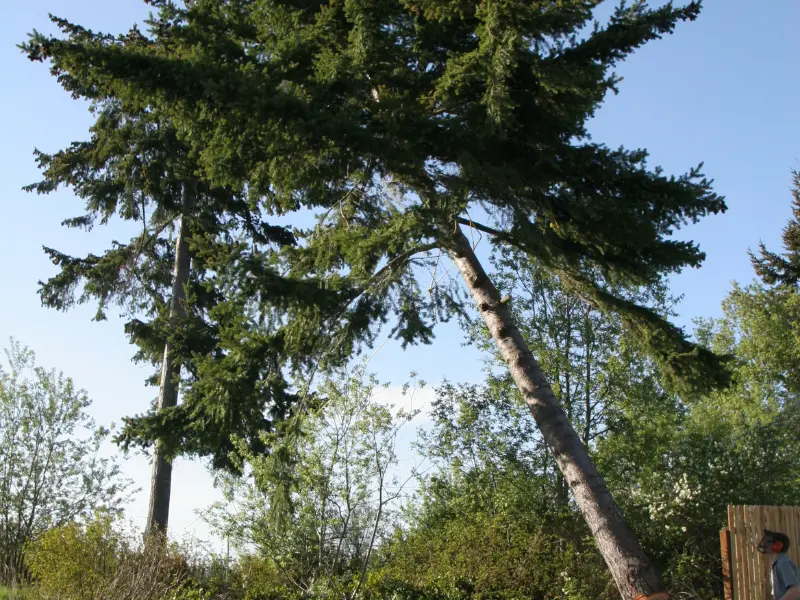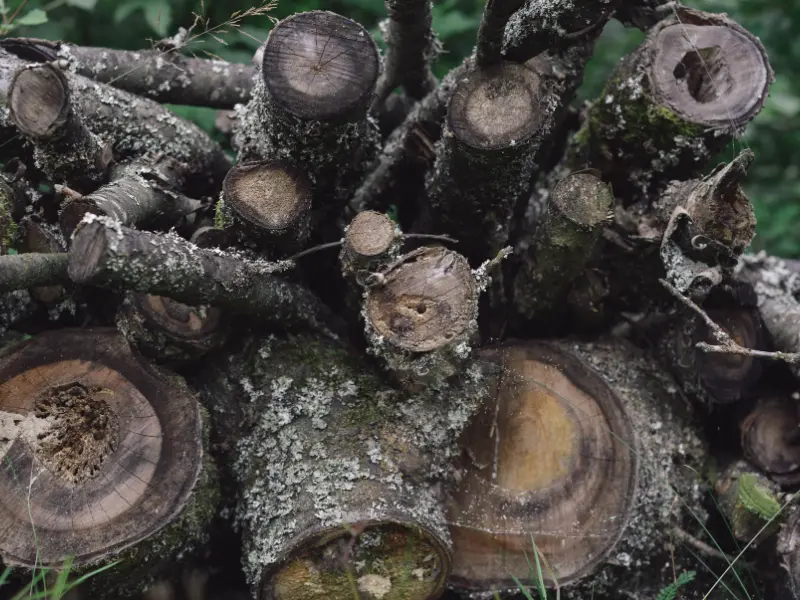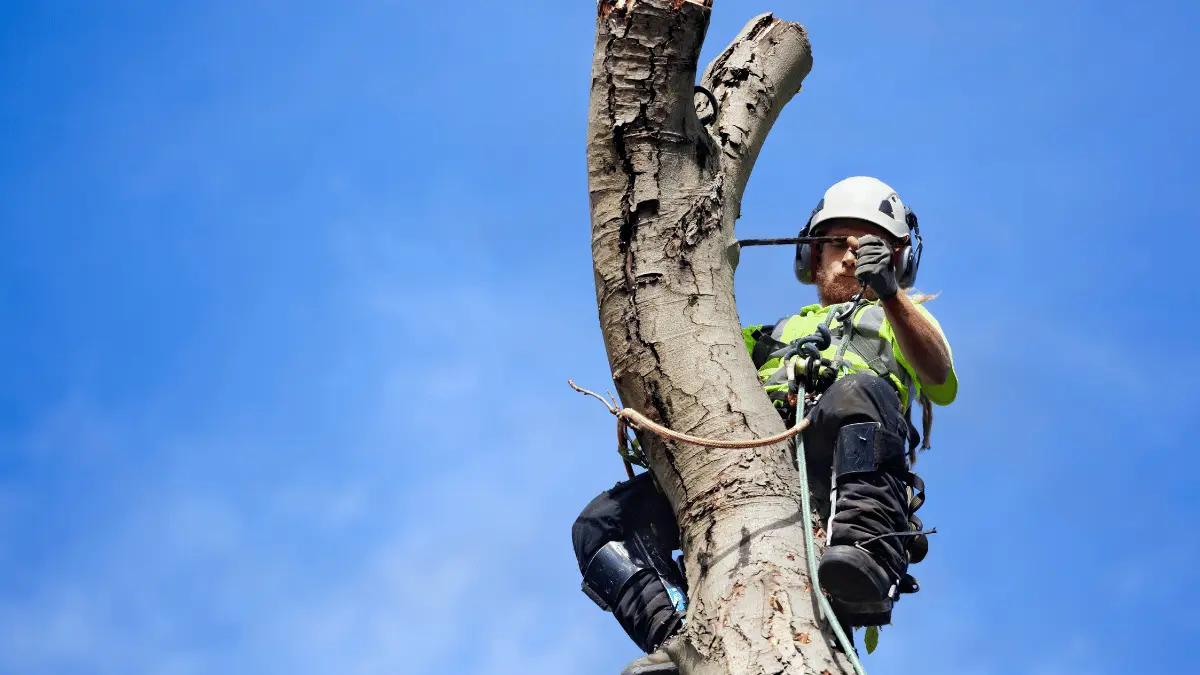If you’re an Albany resident, then you probably know how brutal Mother Nature can be. Icy winds, heavy snowfall, and sudden temperature drops are major events during the cold season, but there are so many more. Like humans, trees also need to survive these weather conditions. Due to this harsh climate, trees can suffer from frostbite, cracked bark, broken limbs, or stunted spring growth.
So, if you want to make sure the trees in your yard stay safe and thrive during these challenging times, then you need to know how to protect trees from winter Albany.
In this blog, we’re going to share some winter tree maintenance tips Albany residents can count on.
Let’s step into what we’ve gathered for you—and how to protect your trees from harsh winters to make sure your green yard stays safe throughout the season.
Start with a Tree Health Inspection

Before the winter season, what you mostly need to do is take a close look at the overall health of your trees. A little but well-cared-for inspection can avoid most of the damage. You can start from the branches and check if there is any decay or any signs of pests. And if you have big and old trees, the best practice is to hire a professional arborist. With their experience and thorough assessment, they will suggest the solution along with the treatment.
For better preparation, you can create a tree winter prep checklist Albany. With that list, you can keep track of what you have done and what you need to do in the future. This will give you a chance for a smooth operation and make sure your winter preparation is efficient and effective.
Prune and Remove Hazardous Branches.

One of the most important tasks in preparing your trees for the cold season is pruning. Trimming weak, dead, or overgrown branches not only improves the tree’s structure but also helps reduce the risk of ice buildup on tree branches, which is a common cause of breakage during Albany’s heavy snowfalls.
When snow or freezing rain accumulates on vulnerable limbs, the added weight can easily snap them, causing damage to the tree and anything below it, including your home, car, or walkways.
This is where tree care services in Albany, NY, can really make a difference. While you can handle light pruning on your own, it’s best to leave high or hard-to-reach branches to professionals. They have the tools and experience to do the job safely and correctly, without putting anyone at risk.
Pruning is also a key step in snow damage prevention for trees.
Removing weak or unbalanced limbs reduces the chances of branches falling during a storm, which helps maintain the health of the tree and improves safety around your property.
As part of your tree winter preparation Albany, make pruning a priority. Not only will it keep your trees healthier, but it will also help you prevent winter damage to trees in Albany and protect trees from winter conditions
Mulch and Insulate Tree Roots

One of the most effective steps in Tree Winter Preparation Albany is mulching around the base of your trees. Mulch acts as a natural insulator, helping to regulate soil temperature and retain moisture during harsh winter
months. By maintaining a more stable root environment, mulch reduces stress caused by freezing and thawing cycles key for successful cold weather tree care.
For best results, apply a layer of organic mulch 2 to 4 inches thick around the base of the tree. Be sure to keep the mulch a few inches away from the trunk to prevent rot and discourage pests. This simple yet crucial technique helps protect trees from winter Albany conditions such as frost heaving and root damage.
Incorporating mulching into your seasonal tree care routine is a smart way to winterize trees. Not only does it help with immediate cold-weather protection, but it also contributes to long-term benefits. Mulch can suppress weed growth, prevent soil erosion, and even reduce the risk of disease.
Come spring, your trees will emerge healthier and stronger thanks to your proactive winter tree maintenance tips.
Wrap Vulnerable Tree Trunks and Branches

Wrapping tree trunks and branches is a highly recommended step in winterizing trees, especially for young or thin-barked trees. Materials like burlap, tree wrap, or plastic tree guards offer a protective barrier against harsh winter elements, including frost, wind, and gnawing animals like deer and rabbits. These wraps help insulate the bark, preventing damage from rapid temperature shifts common during Albany winters.
This method is especially important for species that are sensitive to freeze-thaw cycles. When temperatures fluctuate dramatically, the bark can crack. a condition known as sunscald. Wrapping minimizes these risks, making it an essential part of cold-weather tree care Albany. Additionally, protecting branches can help reduce the accumulation of ice and snow, lowering the chance of breakage from excessive weight.
For homeowners searching for outdoor tree protection tips, Albany, trunk and branch wrapping offers both immediate and long-term benefits. It not only helps protect trees from winter weather but also sets them up for healthier growth in spring.
Make sure to secure wraps loosely to allow airflow and remove them once winter ends to prevent moisture buildup and pest issues.
Be Proactive About Snow and Ice

When it comes to winter Preparation, snow and ice can pose serious risks. One common mistake homeowners make is shaking ice-covered branches; this can cause brittle limbs to snap. Instead, gently brush off heavy snow using a soft broom or your hand, starting from the bottom branches and working upward to avoid adding extra weight below. If branches are coated in ice, it’s best to let them melt naturally to prevent further damage.
To protect your trees in Albany, NY, from snow and ice, consider using anti-desiccant sprays on evergreens. These sprays help retain internal moisture and reduce winter burn, which occurs when trees lose water faster than they can absorb it from frozen soil. Another useful strategy is installing windbreaks or physical barriers, especially around newly planted or vulnerable trees. These structures help block cold, drying winds and reduce snow accumulation.
Being proactive is key for cold weather and preventing damage during winter storms. These winter tree maintenance tips for Albany not only preserve your trees’ health through the harsh season but also contribute to their longevity. By taking these precautions, you’re investing in stronger, more resilient trees that will thrive once the warmer months return.
Introducing the Best Tree Service in Albany.
We have updated you on the importance of professional tree services, the key services offered in the Asbury area, and the qualities of the best tree services near Albany.
We provide top-quality tree care with safety, reliability, and affordability. KD Tree Service has been in the industry for over 14 years, specializing in both residential and commercial tree services. They have become a trusted service provider among residents across the USA for all kinds of tree care, from routine maintenance to emergency tree removal.
Their Main Services:
- Arborist Consultation
Certified arborists thoroughly inspect your trees and landscape, providing expert advice on health, safety, and maintenance. - Tree Removal
Safe and efficient tree removal strategies ensure protection for your surrounding landscape. - Tree Trimming & Pruning
Professional trimming and pruning services improve tree health and appearance. - Stump Grinding & Removal
Stump grinding and removal services help prevent obstacles and unevenness in your garden. - Emergency Tree Services
Their 24/7 emergency response team quickly handles urgent tree issues to restore safety to your property. - Commercial Tree Services
Tailored tree care solutions for businesses and commercial properties, including routine trimming and large-scale tree management.
If you need tree care from the best tree service in Asbury, contact KD Tree Services today for a free estimate.








